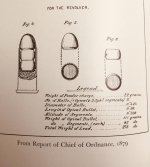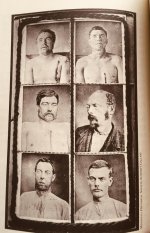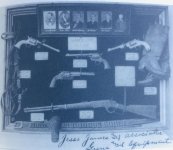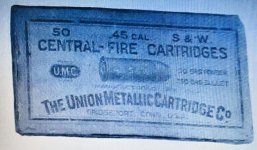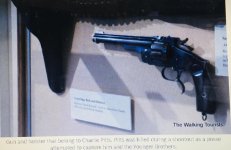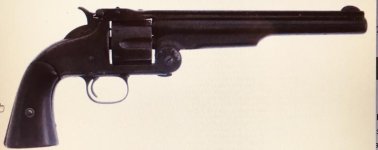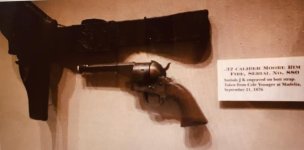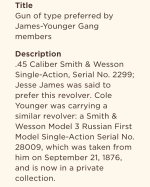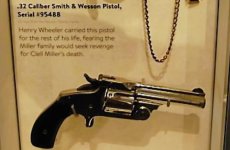Patent reference
Mike,
That's great stuff. Thank's for posting it and participating in the research part of the program!
Ok, it's not something that I'm suggesting? I'm just following the research without prejudice or malice.
So, following the research? The earliest patent for the Merwin NEW ARMY is actually:
December 15, 1874. D. Moore was the patent
designer. Obviously nothing happened for 2 1/2 years until the beginnings of the Army trials.
Then as a result of "Army trials" there are multiple improvements from the original D. Moore design of 1874.
March 6, 1877 D. Moore & W. A. Hulbert. 2 patents listed for the same date. That included multiple improvements to the original 1874 design.
Up to that point in time the design is still geared towards Army trials for an Army issue revolver. They even mention the improvements and recommendations during the trials.
This is the shady area....between very late 1879 to March of 1882. Prior to 1880 the gun was in production for the Army trials only and cartridges were not listed as available to the public. Even your early box has a patent date that supports this research as well.
I'm going to look up that Phoenix Arms patent on that early box of ammo. I'll let you know what I find.
I don't doubt that there was an early variation that was sold to the public. That would be the one I posted from the early broad sheet showing the 1877 design features. The early box you found likely supported early production firearms. "PRE-1882".
My guess would be right after the Army trials from the early 1880's until March of 1882 when the "Automatic Army" was introduced.
They are out there. Likely very few remain. Speculating again on my part but that early design "MUST HAVE" revealed design weaknesses early on. So the company halted production until the problem could be solved. The improved patent actually supports this theory. The patent is a focus on "strengthening" the barrel lock, operating the barrel release, and opening the loading gate. That's a lot of issues!
That's why the 1882 patent was introduced and that's why you see them in huge numbers "AFTER" that patent improvement. THEY FIXED THE PROBLEM
The timeline of the other guns in the Army trials show no patent design improvements of this magnitude after the trials. Therefore they basically had no issues to their design. The Merwin "had issues".
Murph
Mike,
That's great stuff. Thank's for posting it and participating in the research part of the program!
Ok, it's not something that I'm suggesting? I'm just following the research without prejudice or malice.
So, following the research? The earliest patent for the Merwin NEW ARMY is actually:
December 15, 1874. D. Moore was the patent
designer. Obviously nothing happened for 2 1/2 years until the beginnings of the Army trials.
Then as a result of "Army trials" there are multiple improvements from the original D. Moore design of 1874.
March 6, 1877 D. Moore & W. A. Hulbert. 2 patents listed for the same date. That included multiple improvements to the original 1874 design.
Up to that point in time the design is still geared towards Army trials for an Army issue revolver. They even mention the improvements and recommendations during the trials.
This is the shady area....between very late 1879 to March of 1882. Prior to 1880 the gun was in production for the Army trials only and cartridges were not listed as available to the public. Even your early box has a patent date that supports this research as well.
I'm going to look up that Phoenix Arms patent on that early box of ammo. I'll let you know what I find.
I don't doubt that there was an early variation that was sold to the public. That would be the one I posted from the early broad sheet showing the 1877 design features. The early box you found likely supported early production firearms. "PRE-1882".
My guess would be right after the Army trials from the early 1880's until March of 1882 when the "Automatic Army" was introduced.
They are out there. Likely very few remain. Speculating again on my part but that early design "MUST HAVE" revealed design weaknesses early on. So the company halted production until the problem could be solved. The improved patent actually supports this theory. The patent is a focus on "strengthening" the barrel lock, operating the barrel release, and opening the loading gate. That's a lot of issues!
That's why the 1882 patent was introduced and that's why you see them in huge numbers "AFTER" that patent improvement. THEY FIXED THE PROBLEM
The timeline of the other guns in the Army trials show no patent design improvements of this magnitude after the trials. Therefore they basically had no issues to their design. The Merwin "had issues".
Murph
Last edited:


